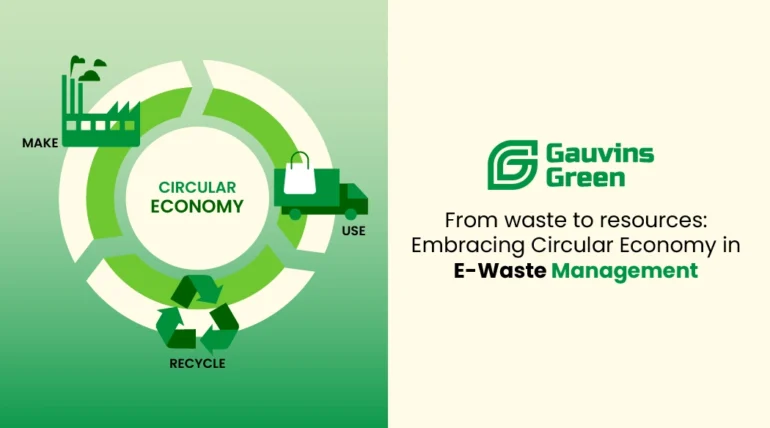Redefining E-Waste: A Step Towards Circular Economy
In the quest for sustainability, the concept of a circular economy is revolutionizing how we view and manage e-waste. Gauvins Green is at the forefront of this transformative approach, turning what was once considered waste into valuable resources. This blog delves into how embracing the circular economy in e-waste management is not only an environmental necessity but also a lucrative opportunity.
The Circular Economy: A Sustainable Alternative
The circular economy model focuses on reusing, repairing, refurbishing, and recycling existing materials and products. This approach contrasts with the traditional linear economy, which follows a ‘take, make, dispose’ model. In the context of e-waste, this means shifting from merely discarding electronic items to recovering and regenerating products and materials.
The Role of E-Waste in the Circular Economy
E-waste is laden with valuable materials like copper, aluminum, and rare earth elements. In a circular economy, these materials are reclaimed and fed back into the production cycle, reducing the need for new raw material extraction and minimizing the environmental impact.
Gauvins Green’s Initiatives in Circular E-Waste Management
At Gauvins Green, we are integrating circular economy principles into our e-waste management strategies:
- Material Recovery and Recycling: We employ advanced techniques to extract precious materials from e-waste, turning discarded electronics into a source of valuable raw materials.
- Design for Sustainability: We collaborate with manufacturers to encourage the design of products that are easier to recycle and have a longer lifespan.
- Consumer Awareness and Participation: Educating consumers about the importance of recycling and offering convenient e-waste disposal options are key to our strategy.
The Challenges and Opportunities
While the benefits of integrating a circular economy model in e-waste management are clear, there are challenges, such as the need for technological advancement and overcoming consumer habits. However, these challenges present opportunities for innovation and development in sustainable practices.
The Future of E-Waste Management
The transition to a circular economy in e-waste management is more than an environmental goal; it’s a new paradigm in how we value and use resources. As we continue to innovate and evolve, the potential for positive change is immense.
Read More : Future Scope of Electronic Waste Recycling in India
Conclusion
Embracing the circular economy in e-waste management is a journey Gauvins Green is proud to be part of. By viewing e-waste not as trash but as a treasure trove of resources, we are paving the way for a more sustainable and prosperous future.
FAQ’s
1. What is the circular economy in the context of e-waste management?
The circular economy in e-waste management refers to an approach that emphasizes reusing, refurbishing, recycling, and recovering materials from electronic waste. Unlike the traditional linear model of ‘take, make, dispose,’ the circular economy aims to keep resources in use for as long as possible, extracting the maximum value from them while in use, and then recovering and regenerating products and materials at the end of their life cycle.
2. How does Gauvins Green contribute to the circular economy through e-waste management?
Gauvins Green contributes to the circular economy by employing advanced recycling techniques to extract valuable materials from e-waste. We collaborate with manufacturers to design more sustainable and recyclable products, and we educate consumers on the importance of e-waste recycling. Our goal is to minimize waste and create a sustainable loop in the lifecycle of electronic products.
3. What are the environmental benefits of embracing the circular economy in e-waste management?
Embracing the circular economy in e-waste management significantly reduces the need for new raw material extraction, thus conserving natural resources. It also minimizes environmental pollution associated with e-waste disposal and reduces the carbon footprint of producing new electronics, leading to a more sustainable environment.
4. How can individuals participate in the circular economy for e-waste?
Individuals can participate in the circular economy for e-waste by properly recycling their electronic devices at the end of their life cycle. They can also support brands and products that are designed with sustainability in mind and choose to repair or refurbish electronics instead of discarding them. Educating oneself and others about the importance of e-waste recycling is also a crucial step in this direction.


